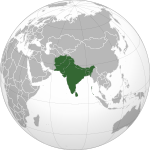Advocate
 19th-century painting of Advocates, by French artist Honoré Daumier | |
| Occupation | |
|---|---|
| Names | Barrister Magistrate |
Activity sectors | Law |
| Description | |
| Competencies | Good memory, advocacy and interpersonal skills, analytical mind, critical thinking, commercial sense |
Fields of employment | Court |
Related jobs | Barrister, judge, jurist |
An advocate is a professional in the field of law. Different countries and legal systems use the term with somewhat differing meanings. The broad equivalent in many English law–based jurisdictions could be a barrister or a solicitor. However, in Scottish, Manx, South African, Italian, French, Spanish, Portuguese, Scandinavian, Polish, Israeli, South Asian and South American jurisdictions, "advocate" indicates a lawyer of superior classification.[1]
"Advocate" is in some languages an honorific for lawyers, such as "Adv. Sir Alberico Gentili".[2] "Advocate" also has the everyday meaning of speaking out to help someone else, such as patient advocacy or the support expected from an elected politician; this article does not cover those senses.




